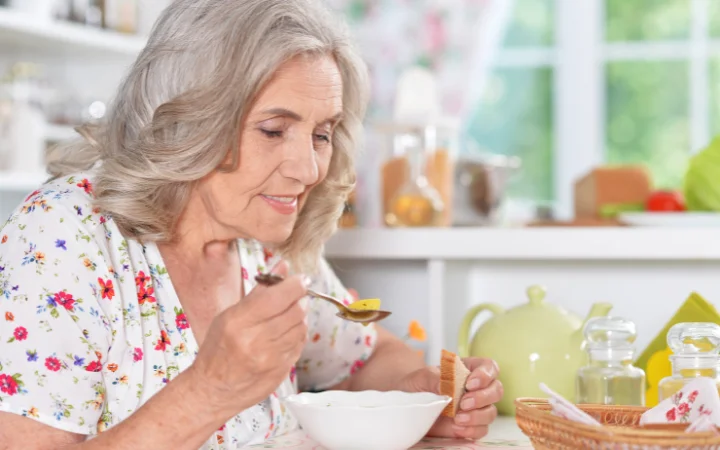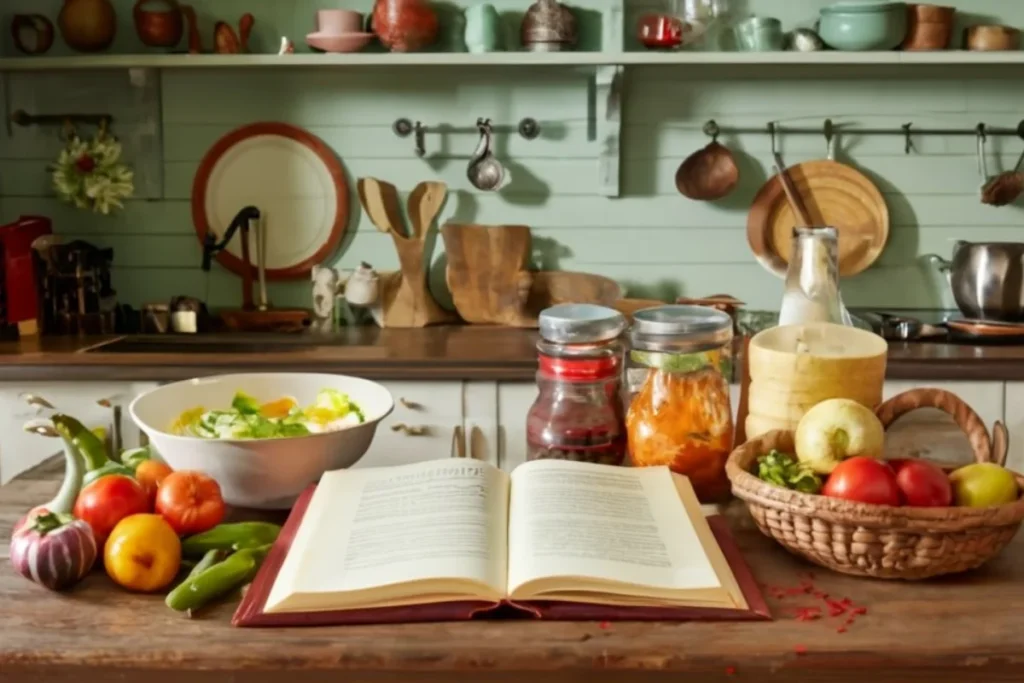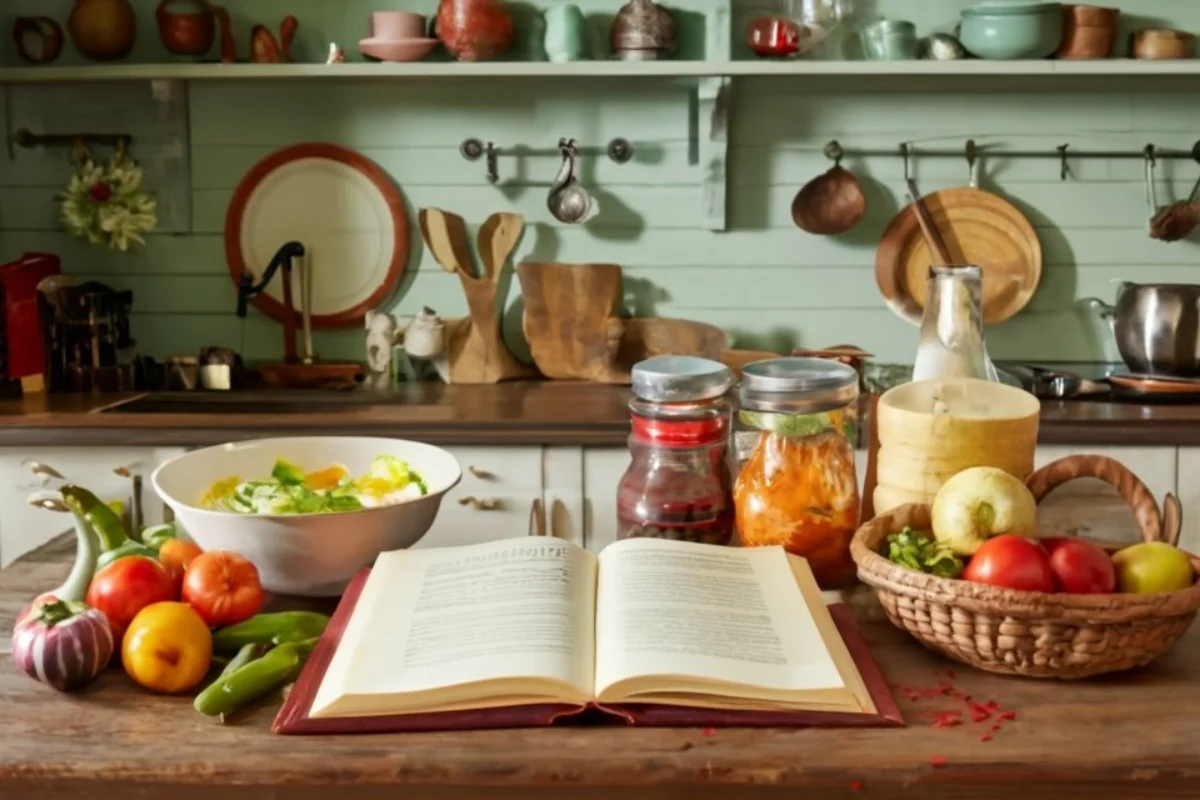Key Ingredients and Their Nutritional Benefits
Ingredients That Make the Soup Special
Now, let’s get to the heart of the matter – the ingredients! In grandma’s homemade vegetable soup, every vegetable plays its part, not just in flavor but also in nourishing your body. It’s like a symphony of nutrients, each ingredient adding its unique note to create a harmonious and healthful melody.
Health Benefits of Key Vegetables
Carrots, onions, and potatoes, oh my! These aren’t just tasty; they’re packed with vitamins and minerals. Carrots, with their beta-carotene, are great for your eyes, while onions, rich in antioxidants, support your immune system. And let’s not forget potatoes – these starchy wonders are a fantastic source of energy-providing carbohydrates. It’s incredible how these simple ingredients can contribute to a well-balanced diet. For a similar take on this classic, visit The Copper Table’s recipe.
In the next part, we’ll walk you through the step-by-step process of making this delightful soup. Get ready to roll up your sleeves and bring grandma’s recipe to life!

Step-by-Step Recipe Guide
Crafting the Perfect Bowl of Soup
Alright, it’s time to roll up our sleeves and dive into the heartwarming process of making grandma’s homemade vegetable soup. Trust me, it’s easier than you might think, and the end result? Absolutely worth it. Let’s embark on this culinary adventure, shall we? For a visual guide, check out this TikTok video on a similar soup recipe.
Preparing and Cooking the Ingredients
First things first, gather your veggies – carrots, onions, potatoes, and any other favorites. Give them a good wash, peel if necessary, and chop them into bite-sized pieces. It’s all about the prep work, folks!
Next, grab a large pot and let’s get cooking. Start by sautéing the onions until they’re just translucent – oh, that aroma is the first sign of something great! Then, toss in the rest of your veggies, and let them join the party.
Now, pour in enough water or broth to cover the vegetables. This is where the magic starts to happen. Bring it to a boil, then reduce the heat and let it simmer. As the soup gently bubbles away, the flavors start to mingle and meld, creating that rich, comforting taste we all love.
Remember, patience is key here. Let the soup simmer for a good hour or so, allowing the ingredients to soften and the flavors to deepen. Trust me, it’s worth the wait.
And there you have it – a pot full of grandma’s homemade vegetable soup, ready to warm hearts and bellies. In our next part, we’ll share some tips and tricks to elevate your soup to the next level. Stay tuned!
Tips and Tricks for the Best Soup
Enhancing the Flavor and Texture
Now that you’ve got the basics down, let’s talk about taking your vegetable soup to the next level. It’s all about those little tweaks and secrets that transform a good soup into a great one. Ready to become a soup whisperer? Let’s dive in!
Secret Tips from Grandma’s Kitchen
First up, let’s chat about flavor, and if you’re interested in more soup flavors, check out our ultimate guide to mastering chicken soup flavor. One of grandma’s tricks is to use a rich, homemade broth as the base. It’s a game-changer, folks! If you’re short on time, a good quality store-bought broth can work wonders too.
Next, consider the power of herbs and spices. A bay leaf, some thyme, or a sprinkle of parsley can add depth and complexity to your soup. And don’t be shy with the salt and pepper – they’re the unsung heroes of seasoning.
Now, texture. Want your soup a bit thicker? A simple trick is to mash some of the cooked vegetables right in the pot. It’s a natural thickener and boosts the soup’s heartiness.
And here’s a pro tip: let your soup rest. Once it’s done cooking, take it off the heat and let it sit for a bit. This resting period allows the flavors to meld beautifully.
So there you have it, a few tricks up your sleeve to make your vegetable soup truly special, we’ll explore some variations and customizations to cater to different tastes and dietary needs. Stay tuned for more soup secrets!

Variations and Customizations
Personalizing Your Vegetable Soup
Now, let’s talk about making grandma’s homemade vegetable soup your own. After all, the best recipes are the ones you can tweak to suit your taste buds and dietary needs. Whether you’re a vegan, a meat-lover, or somewhere in between, there’s a soup variation just for you.
Adapting the Recipe for Dietary Needs
For the veggie enthusiasts out there, consider adding a rainbow of vegetables to your soup. Think bell peppers, zucchini, and leafy greens like spinach or kale. Not only do they add color and texture, but they also pack a nutritional punch.
If you’re looking to add some protein, why not throw in some beans or lentils? They’re hearty, healthy, and oh-so-satisfying. For the meat lovers, chunks of chicken, beef, or even some sausage can turn your vegetable soup into a robust meal.
And let’s not forget about our gluten-free friends. Swapping out regular noodles for gluten-free pasta or rice is a simple yet effective way to make this soup accessible to everyone.
In our next part, we’ll explore some perfect pairings and serving suggestions to complete your soup experience. For more creative ideas on vegetable soup variations, check out Cookie and Kate’s Seriously Good Vegetable Soup recipe. Get ready to set the table for a feast!
Pairing and Serving Suggestions
Complementing the Soup with Sides
Alright, you’ve made a delicious pot of grandma’s homemade vegetable soup. Now, let’s chat about how to serve it up in style. The right pairings can elevate your soup from a simple dish to a complete, satisfying meal. Let’s dive into some mouth-watering options!
Ideal Pairings for a Wholesome Meal
Imagine this: a warm bowl of vegetable soup paired with a crusty piece of bread or a buttery roll. It’s a classic combo that never fails to please. The bread is perfect for soaking up all that flavorful broth – yum!
For a lighter option, consider pairing your soup with a fresh, crisp salad. It’s a great way to add some greens to your meal and keep things balanced. A simple vinaigrette dressing can really bring out the flavors of both the salad and the soup.
And let’s not forget about the kiddos! A grilled cheese sandwich is a fun and kid-friendly side that pairs wonderfully with vegetable soup. It’s a cozy, comforting meal that’s sure to bring smiles all around.
In our next part, we’ll share some tips on storing and reheating your soup, so you can enjoy it for days to come. Stay tuned for more helpful hints!

Storing and Reheating Tips
Keeping the Soup Fresh and Delicious
So, you’ve enjoyed a hearty bowl of grandma’s homemade vegetable soup, but what about the leftovers? Don’t worry, I’ve got you covered with some top-notch tips for storing and reheating your soup. This way, you can savor that homemade goodness for days to come!
Best Practices for Storage and Reheating
First things first, let’s talk storage. Once your soup has cooled down, transfer it into airtight containers. This will keep it fresh and prevent any unwanted fridge flavors from sneaking in. Your soup can happily chill in the fridge for up to 3-4 days.
But what if you’ve made a big batch? No problem! Vegetable soup freezes beautifully. Just pour it into freezer-safe containers or bags, leaving a little space at the top for expansion. Label them with the date, and you’re good to go. When you’re ready to enjoy it again, just thaw it in the fridge overnight.
Now, for reheating. The key is to do it gently. Whether you’re using a stovetop or microwave, heat the soup slowly and stir it occasionally. This helps to evenly warm it up without overcooking the veggies. And there you have it – your soup is as good as new!
In our next part, we’ll dive into the FAQs section, answering all those burning questions about vegetable soup. Stay tuned for some insightful answers!
FAQs Section
Answering Common Questions About Vegetable Soup
We’ve cooked, we’ve paired, and we’ve stored. Now, let’s tackle some of the most frequently asked questions about grandma’s homemade vegetable soup. Whether you’re curious about ingredients, cooking techniques, or dietary adaptations, I’ve got the answers right here!
Insights from Frequently Asked Questions
-
What are the key ingredients in grandma’s homemade vegetable soup?
The beauty of this soup lies in its simplicity. Key ingredients usually include a variety of vegetables like carrots, potatoes, and onions, along with a flavorful broth. But remember, there’s always room for customization!
-
How can I make vegetable soup more flavorful?
Herbs and spices are your best friends here. Think bay leaves, thyme, or parsley. Also, don’t underestimate the power of a good broth – it can really elevate the taste.
-
What are some variations of traditional vegetable soup?
The sky’s the limit! You can add beans, lentils, or meat for protein, or play around with different veggies. For a global twist, try adding spices like curry powder or paprika.
-
Can vegetable soup be made in a slow cooker or Instant Pot?
Absolutely! Both appliances are great for making soup. Just toss in your ingredients, set it, and forget it. The slow cooker is perfect for a low and slow simmer, while the Instant Pot offers a quicker option.
-
How do I store and reheat leftover vegetable soup?
Store it in airtight containers in the fridge for up to 3-4 days, or freeze it for longer storage. Reheat gently on the stove or in the microwave, stirring occasionally.
-
Are there any tips for making vegetable soup healthier?
Sure thing! Load up on the veggies, opt for low-sodium broth, and consider using whole grain pasta or brown rice if you’re adding grains.
-
Can I freeze homemade vegetable soup?
Yes, you can! Just make sure to use freezer-safe containers and leave some space for expansion.
-
How can I thicken my vegetable soup?
A simple trick is to mash some of the cooked vegetables directly in the pot. Alternatively, you can use a bit of cornstarch or flour mixed with water.
-
What are some common vegetables used in grandma’s soup recipes?
Classics include carrots, potatoes, onions, and celery. But feel free to get creative with what you have on hand.
-
How can I adapt the soup recipe for dietary restrictions (e.g., vegan, gluten-free)?
For a vegan version, use vegetable broth and skip any meat. For gluten-free, avoid regular pasta and flour, and opt for gluten-free alternatives.
In our next and final part, we’ll wrap things up with some concluding thoughts and reflections. Stay tuned for the grand finale!
Conclusion and Final Thoughts
Heading: Savoring the Warmth of Homemade Soup
As we come to the end of our culinary journey, it’s clear that grandma’s homemade vegetable soup is more than just a dish – it’s a testament to the power of simple, nourishing food. This soup, with its humble ingredients and rich flavors, embodies the essence of home cooking and the joy of sharing a meal with loved ones.
Subheading: Reflecting on the Joy of Cooking and Sharing
Whether you’re following grandma’s exact recipe or adding your own twist, remember that the real magic lies in the act of cooking and sharing. Each bowl of soup is a story, a memory, and a piece of culinary heritage passed down through generations.
So, next time you’re in the kitchen, simmering a pot of vegetable soup, take a moment to appreciate the tradition and love that go into every spoonful. Discover the story of an Italian Nonna’s soup and its journey through generations at This Italian Nonna’s Vegetable Soup Is a Portal to Her Past | Saveur. And don’t forget to share it with someone special – after all, that’s what grandma’s recipes are all about.

Thank you for joining me on this delicious adventure. Here’s to many more bowls of comforting, heartwarming soup!






